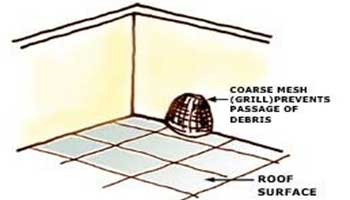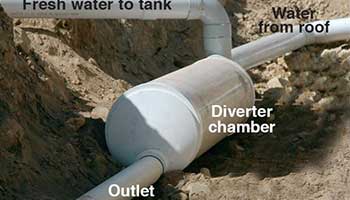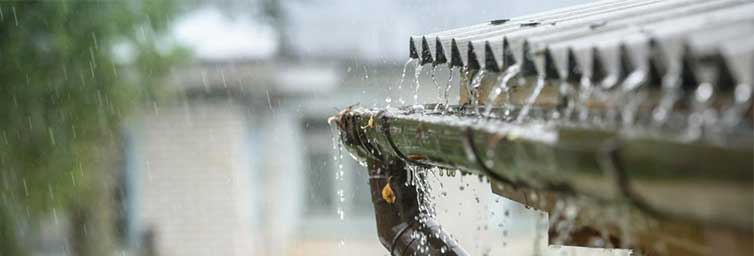The scarcity of clean water, especially during the dry season, is an issue that needs to be addressed immediately. This adversity is further antagonised by the growing population in our country. Water covers more than 70% of the earth’s surface out of which less than 3% is fresh water. Water also constitutes about 60% of the human body, i.e., it is vital for our survival. Freshwater can be found as atmospheric water, in glaciers, permafrost and groundwater. These are thought to be the primary sources of drinking water throughout the world.
The lack of safe drinking water is a huge concern that has to be taken care of quickly. Water management strategies must be implemented more efficiently. Rainwater has huge potential in providing clean drinking water and is increasingly becoming important for storing water in both commercial and residential areas. Rainwater Harvesting is a simple yet powerful technique that can be used by all.
What is Rainwater Harvesting?

Rainwater Harvesting is a straightforward technique where rainfall that falls on the roof of a building is collected, stored and purified for later use.
Why should we harvest rainwater?

There is a huge depletion of freshwater. Rainwater is a source of freshwater and is available in most areas. However, most times it is run off when instead, it can be stored and used when necessary.
What are the benefits of Rainwater harvesting?
- Prevents runoff and wastage of rainwater which is a natural resource of freshwater.
- Reduces the usage of the main water supply by almost 40-50%.
- Replenishes major water supply resources.
- Can be purified for drinking and serve other purposes as well.
- Replenishes the groundwater table.
- Reduces the loss of the top layer of soil.
- Easy to install and maintain.
- Lower cost of water supply.
- Promotes water and energy conservation.
- Promotes sustainable way of living.
A Rainwater Harvesting System is made up of the following components:
- Catchment
- Coarse Mesh
- Gutter
- Conduit
- First-flush device
- Filter
Catchment

A catchment area is the surface area that collects the water that is directly received during rainfall. For buildings, it can be a roof made up of Reinforced Cement Concrete(RCC) or corrugated sheets. It can also be a paved area such as the terrace of a building, lawn or open ground.
Coarse Mesh

A coarse mesh is a netting of wires that are placed at the entry position of the water channel. It is positioned to prevent the passage of dirt, leaves and debris from entering the water system.
Gutter

The gutter is a channel that surrounds the edges of the sloping roof or catchment area directing the accumulated water towards the conduit. The passageway is either rectangular or semi-circular in shape and is made using PVC material or plain galvanised iron sheets cut into the required shape and size. Bamboo and betel can also be used. It is crucial to ensure that the gutter does not hang or drop down from its position. Brackets can be used to fix the passageway in place.
The gutter size should be measured according to the intensity of flow during maximum rainfall. Measurements should be at least 10-15% oversize.
Conduit

Conduits are pipelines that carry the collected water from the catchment or rooftop of the building to the storage tank. They can be made up of the same material as the gutter such as PVC or galvanised iron sheets.
First-flush device

Water that is harvested in the catchment area can be contaminated by dirt, leaves, bird droppings, etc. It is crucial to get rid of these contaminants before using the water for any other purposes. A first flush device as the name suggests flushes off the first bout of water from a storm as this contains the most of the adulterates that are carried along with the rainwater. It is the next best defence in ensuring that the water is clean for use.
Filter

A filter is used to remove the contaminants from rainwater that is collected from the catchment area. The filter component consists of material such as fibre and coarse aggregates like sand and gravel layers through which water will pass. For larger catchment areas such as the rooftop of a commercial building, the filtering unit must accommodate the pressure caused due to excess flow of water. Based on filtering substance, filters are of different kinds. Two types that are majorly used are:
- Sand filter
- coal water filter
Rainwater Harvesting is a very effective method that can be used for both commercial and residential buildings (apartments and independent houses). It is an environmental-friendly method and is relatively simple to implement. On average, the water usage per family is more or less 140 litres per day. Most of the clean water is wasted while flushing the toilet. Runoff water and rainfall on the rooftops should be diverted in an effective arrangement so that it can be used carefully. The water that is collected via the rainwater harvesting system can be used for many purposes such as recharging dry bore wells, watering gardens, toilet flushing, cleaning sidewalks, etc. Rainwater Harvesting is an eco-friendly and economical method of storing water that should be used more often.
Please check out:
Porotherm bricks Advantages





















